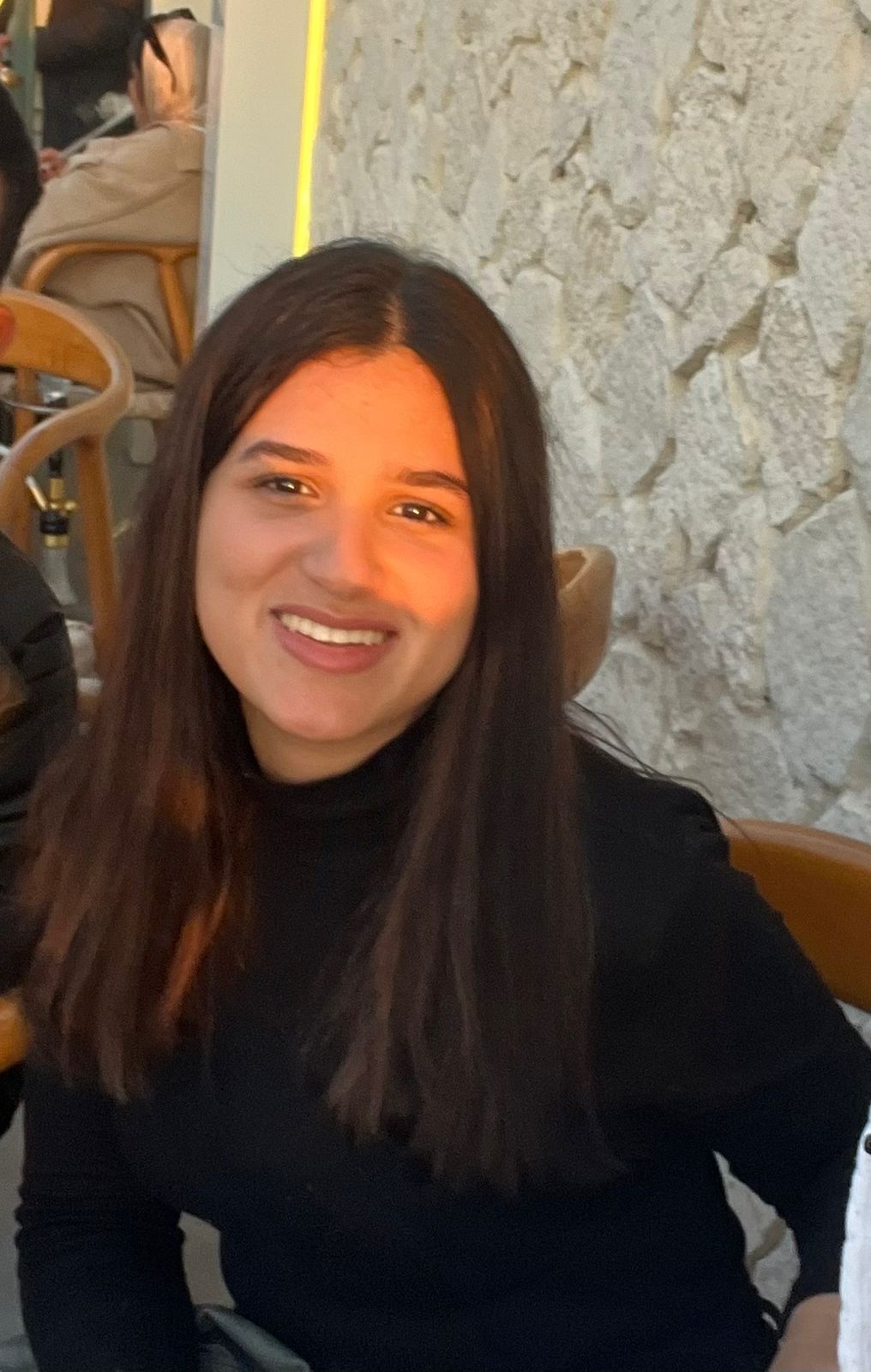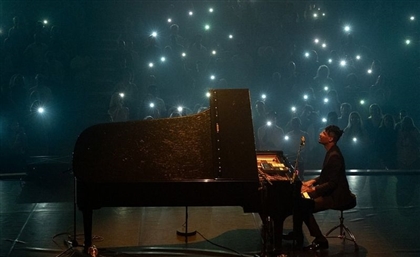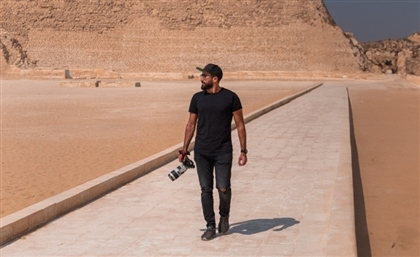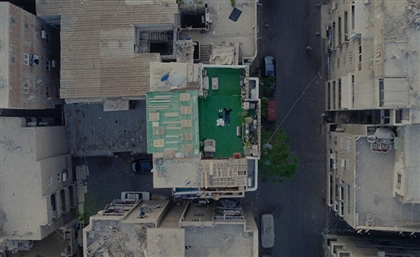How a Casual Feed Turned Meshary AlNassar Into a Studio Founder
Meshary AlNassar is part of a new generation of Gulf designers reshaping regional narratives through architecture, interiors, and objects that prioritise emotion over ego.
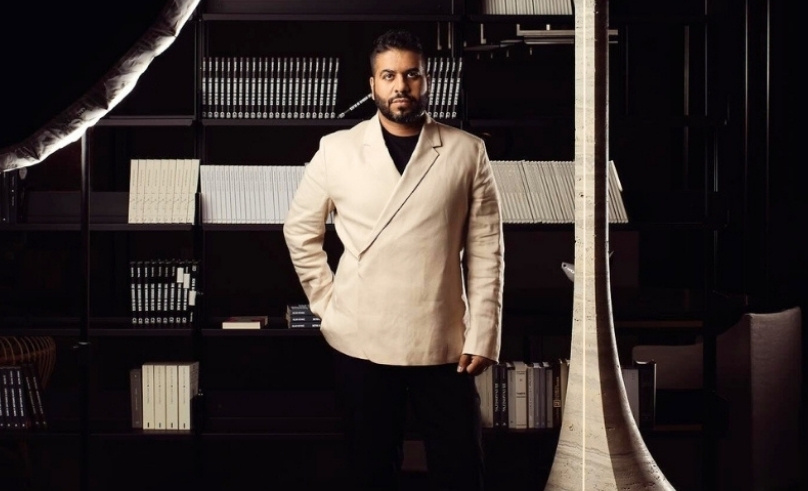
When you open the gate to The Jewel, one of Studio Meshary AlNassar’s (SMN) residential projects in Dubai, the first thing you notice isn’t the architecture, it’s the space between things. The rough stone underfoot. The soft crunch of gravel. The narrow passage, that opens into a courtyard framed by two clean volumes and a soaring cylindrical tower of stacked glass blocks. At the centre, a long table sits under a canopy of string lights.
It feels both intentional and entirely unforced, like the house grew around the life it now holds.
-a0c0dd47-82f4-4a1f-bb9b-14bf0ba38a0d.jpg)
This balance of structure and softness, of geometry and ease, is where designer Meshary AlNassar does his best work.
-531bba80-4de4-45ea-b9bd-611d06c47e9e.jpg)
Born and raised in Kuwait’s scaffolding of ambition, AlNassar's childhood unfolded amidst the dust and dreams of construction sites. His family’s world was all concrete and enterprise, yet young AlNassar sensed a deeper pull. “I loved the alchemy,” he recalls. "I loved the thought of turning an idea into something people could experience.” This instinct was nurtured within walls built by his grandfather- a man who understood architecture as legacy. A home where each family claimed a floor, balconies embraced a shared courtyard, and windows framed intimate narratives. Here, AlNassar learned to read the linguistics of space; how light sculpted mood, how a hallway pulls you in, how movement became poetry. It was his first cinema. His destiny, almost.
-22eaa393-f357-4a33-9ad9-a6797c066ccd.jpg)
Years honed that instinct. Dubai’s architecture schools provided theory, but his true studio bloomed online. As a student, he transformed Instagram into a second studio- sharing designs, musings, life. Unpolished posts became unexpected cornerstones. “That transparency built trust,” AlNassar tells SceneHome. “Many of those followers became my first clients once I graduated.”
-bfd9bef1-5009-4701-bd89-ea603ff54d80.jpg)
In 2018, he opened SMN Studio with no strategy decks. Just a rented space and a vision. It filled fast. “There’s a certain superpower in manifesting your vision and watching it come to life.” This became his crucible for challenging traditions: redefining Arab masculinity in design, proving profitability could walk hand-in-hand with artistry in the region. “I began to challenge traditional notions, especially what it means to be a male designer from the Arab world, and what it means to run a profitable design business in the region,” AlNassar says.
-38887e14-81d7-4652-9e1e-3aa444484262.jpg)
AlNassar's approach is storytelling steeped in ancestral memory. The shared courtyard of his youth - a stage for domestic theatre - imbues his work with emotional architecture. Whether crafting a sanctuary for an Arab art collector or reimagining tradition for a Khaleeji couple, AlNassar begins by listening.
-69c35a95-b79d-4297-96ad-77ba4f53d8e8.jpg)
His international arrival came with the 410 Collection, a personal homage wrapped in poetic detail. Three stone light sculptures, carved with monastic restraint, overflowing with heritage. Their forms echo trees from his grandfather’s garden; the number, his grandfather's first license plate. Mere nostalgia, claiming architecture as inheritance. “It told a story,” AlNassar says. “This collection was my way to tell a story, but to prove my point that Middle Eastern and Arab designers are able to compete on the international stage - and I think I’ve made my point very clear.”
-3b3ad300-8dc9-43c2-95cb-7a683e184621.jpg)
Flash holds no allure. AlNassar's power lies in the quiet resonance. “Opulence, to me, isn’t about gold finishes or grand gestures. It’s about curation, storytelling, and soul.” Even a sterile clinic, bound by antiseptic surfaces and harsh regulations, became sacred under his touch. “We managed to beautify a clinic in a way that feels so much like an intimate home.”
-6d273c6c-23f8-4c14-80be-a83148414d7e.jpg)
Today, SMN Studio is a living ecosystem - part design atelier, part product lab, part sandbox of possibility. Alongside collaborator Mishari AlAwadhi, AlNassar crafts “layers for a space,” answering a yearning for pieces untouched by trends or mass production. His process is a deliberate ritual: silence first, allowing the space itself to speak. Sketches emerge on floor plans. Reality checks spark conversation. Creation begins. “There’s a yearning for good quality products that aren’t following a trend or are mass produced.”
-c6e4ce95-d1dc-432b-9764-b2bdd3e53c7e.jpg)
His process starts in silence. No rushing. No assumptions. “I take my time being in the space to allow the imagination to flow. Then I sketch on the floor plan. Then I get the reality check from the team. And that’s when the real conversations start.”
- Previous Article “Hide Your Face If You Want”: Rehab Eldalil Rethinks Photojournalism
- Next Article Six Unexpected Natural Wonders to Explore in Egypt
Trending This Week
-
Dec 12, 2025







